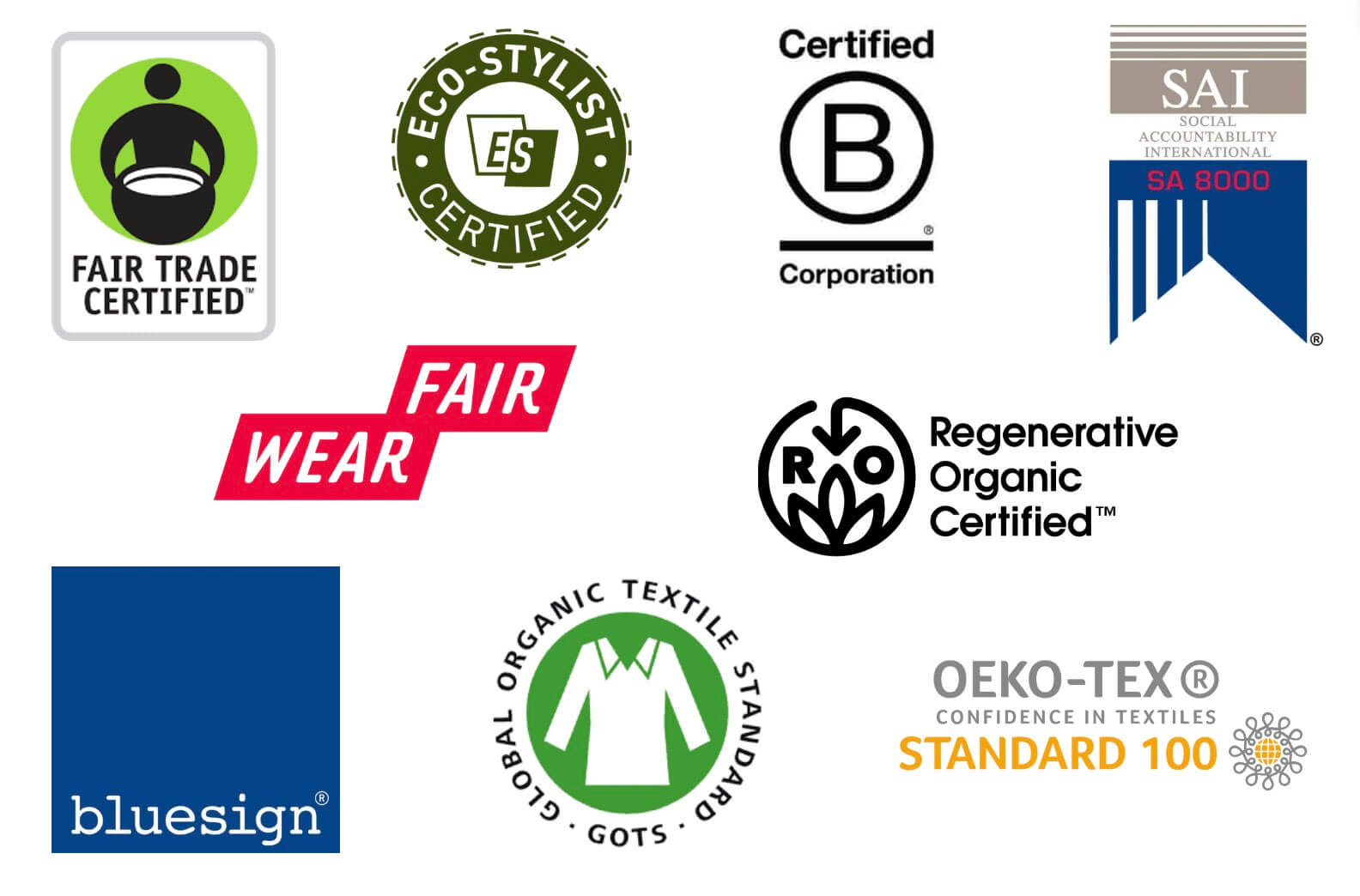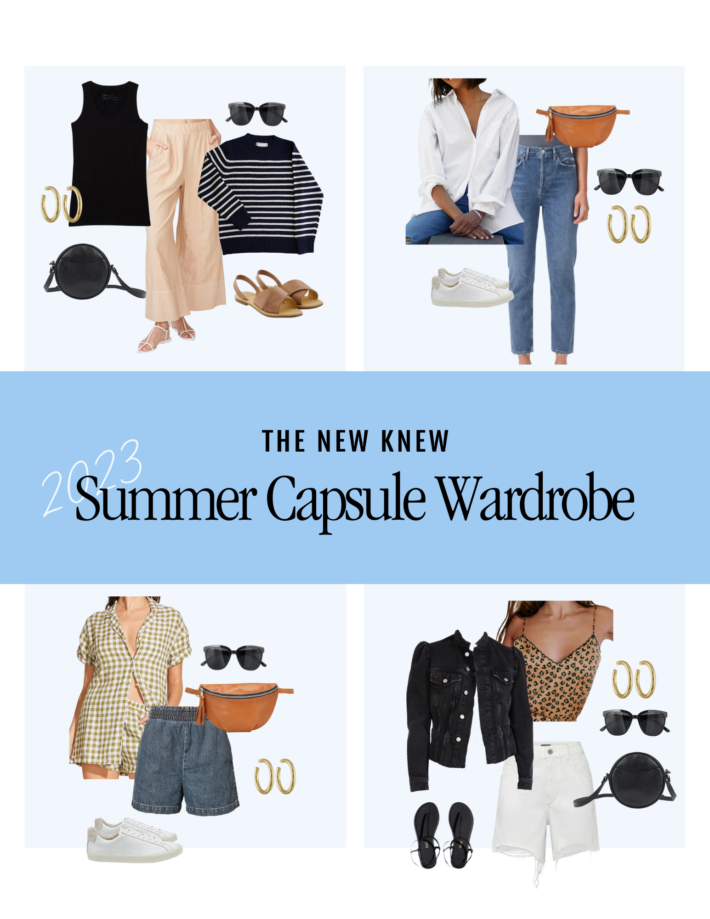Explore the best health-conscious fashion choices that blend style, sustainability, and wellness. From organic fabrics to toxin-free clothing, discover how mindful dressing supports eco-friendly living and personal well-being. Perfect for fashion lovers seeking sustainable lifestyle tips and wardrobe inspiration.
How Can Fashion and Health Work Together to Boost Your Wellness in 2025?
What Are the Best Health-Conscious Fashion Choices for a Sustainable Lifestyle?
Discover the best health-conscious fashion choices for a sustainable lifestyle, blending eco-friendly materials, ethical production, and wellness-focused designs. Learn how to build a wardrobe that supports your health and the planet.
Table of Contents: What Are the Best Health-Conscious Fashion Choices for a Sustainable Lifestyle?
- Introduction to Health-Conscious Sustainable Fashion
- Why Health-Conscious Fashion Matters
o Environmental Impact of Fast Fashion
o Health Risks of Conventional Clothing
o Benefits of Health-Conscious Fashion
· Key Principles of Health-Conscious Sustainable Fashion
o Eco-Friendly Materials
o Non-Toxic Dyes and Finishes
o Ethical and Transparent Production
o Durability and Timeless Design
o Mindful Consumption
· Top Health-Conscious Fashion Choices for a Sustainable Lifestyle
o Organic Cotton Basics
o Hemp Clothing
o Linen Dresses and Pants
o Tencel (Lyocell) Activewear
o Recycled and Upcycled Fashion
o Natural Fiber Accessories
· How to Build a Health-Conscious Sustainable Wardrobe
o Step 1: Assess Your Current Wardrobe
o Step 2: Research Sustainable Brands
o Step 3: Prioritize Versatility
o Step 4: Shop Secondhand
o Step 5: Care for Your Clothing
· Top Sustainable Fashion Brands for Health-Conscious Consumers
o Pact
o Eileen Fisher
o Patagonia
o People Tree
o Girlfriend Collective
o Thought Clothing
· The Role of Certifications in Health-Conscious Fashion
· Health-Conscious Fashion Tips for Different Seasons
o Spring
o Summer
o Fall
o Winter
· Incorporating Wellness into Your Fashion Choices
o Prioritize Comfort
o Support Mental Health
o Stay Active
o Practice Mindful Shopping
· Overcoming Challenges in Health-Conscious Sustainable Fashion
o Cost
o Accessibility
o Greenwashing
o Limited Options
· Practical Tips for SEO-Optimized Sustainable Fashion Blogging
o Keyword Optimization
o High-Quality Content
o Readable Structure
o Internal and External Links
o Engaging Visuals
o Promote on Social Media
· Conclusion: Embrace Health-Conscious Sustainable Fashion
Introduction to Health-Conscious Sustainable Fashion
In today’s world, fashion is more than just style—it’s a statement of values. Health-conscious sustainable fashion combines eco-friendly practices with choices that prioritize personal well-being. As consumers become more aware of the environmental and health impacts of their clothing, the demand for sustainable, non-toxic, and ethically produced garments is skyrocketing. This 6000-word guide explores the best health-conscious fashion choices for a sustainable lifestyle, offering practical tips, brand recommendations, and insights into how your wardrobe can align with both planetary and personal health.
The term “health-conscious fashion” refers to clothing made from non-toxic, hypoallergenic, and skin-friendly materials that minimize harm to the body while adhering to sustainable and ethical production practices. Sustainable fashion, often called eco-fashion or slow fashion, emphasizes environmentally friendly materials, fair labor practices, and durability to reduce waste. By choosing health-conscious sustainable fashion, you can look good, feel good, and contribute to a greener planet.
This article is optimized for the keyword “health-conscious fashion choices for a sustainable lifestyle” to help you discover low-difficulty, high-value strategies for building a wardrobe that supports your health and the environment. Let’s dive into why this matters, what to look for, and how to make informed choices.
Why Health-Conscious Fashion Matters
The fashion industry is one of the largest polluters globally, contributing to water pollution, carbon emissions, and textile waste. Fast fashion, in particular, relies on cheap synthetic materials and harmful chemicals that can affect both the environment and your health. Here’s why health-conscious sustainable fashion is critical:
Environmental Impact of Fast Fashion
Fast fashion brands produce low-cost clothing at the expense of the planet. The production process often involves:
- Water Pollution: The textile industry is responsible for 20% of global wastewater, with dyeing processes releasing toxic chemicals into water systems.
- Carbon Footprint: Synthetic fibers like polyester, derived from petroleum, contribute to greenhouse gas emissions.
- Textile Waste: Over 92 million tons of textile waste are generated annually, much of it non-biodegradable.
Health Risks of Conventional Clothing
Many conventional garments contain harmful substances that can impact your health:
- Toxic Chemicals: Dyes, finishes, and treatments like formaldehyde and PFAS (forever chemicals) can cause skin irritation, allergies, or even long-term health issues.
- Microplastics: Synthetic fabrics like polyester and nylon shed microplastics, which can enter the body through skin contact or inhalation.
- Poor Ventilation: Non-breathable materials trap heat and moisture, leading to skin discomfort and potential infections.
Benefits of Health-Conscious Fashion
Choosing health-conscious sustainable fashion offers multiple benefits:
- Non-Toxic Materials: Organic cotton, hemp, and linen are free from harmful chemicals, reducing skin irritation risks.
- Breathability: Natural fibers allow better air circulation, promoting skin health.
- Ethical Production: Supporting brands with fair labor practices ensures workers’ well-being, aligning with a holistic health-conscious lifestyle.
- Longevity: High-quality, durable clothing reduces the need for frequent replacements, saving money and resources.
By prioritizing health-conscious fashion, you protect your body, support ethical practices, and reduce your environmental footprint.
Key Principles of Health-Conscious Sustainable Fashion
To make the best fashion choices, understand the core principles that define health-conscious sustainable fashion. These principles guide material selection, production methods, and consumption habits.
1. Eco-Friendly Materials
The foundation of health-conscious fashion is the use of sustainable, non-toxic materials. Look for:
- Organic Cotton: Grown without pesticides or synthetic fertilizers, organic cotton is hypoallergenic and biodegradable.
- Hemp: A low-impact crop requiring minimal water and pesticides, hemp is durable, breathable, and antimicrobial.
- Linen: Made from flax, linen is lightweight, breathable, and naturally resistant to bacteria.
- Tencel (Lyocell): A regenerated cellulose fiber made from sustainably sourced wood pulp, Tencel is soft, breathable, and biodegradable.
- Recycled Fabrics: Materials like recycled polyester or nylon reduce waste while minimizing the use of virgin resources.
Avoid synthetic fabrics like polyester, acrylic, and conventional nylon, which may contain harmful chemicals and contribute to microplastic pollution.
2. Non-Toxic Dyes and Finishes
Dyes and finishes can introduce harmful chemicals into clothing. Opt for brands that use:
- Natural Dyes: Derived from plants, minerals, or insects, these dyes are safer for your skin and the environment.
- Low-Impact Dyes: These use less water and energy while avoiding toxic chemicals.
- OEKO-TEX Certification: This certification ensures textiles are free from harmful substances.
3. Ethical and Transparent Production
Health-conscious fashion extends beyond materials to the treatment of workers. Choose brands that:
- Prioritize fair wages and safe working conditions.
- Are transparent about their supply chain.
- Hold certifications like Fair Trade, GOTS (Global Organic Textile Standard), or SANE Standard, which ensure ethical and sustainable practices.
4. Durability and Timeless Design
Sustainable fashion emphasizes quality over quantity. Invest in timeless, durable pieces that:
- Resist wear and tear.
- Are versatile for multiple outfits.
- Reduce the need for frequent replacements.
5. Mindful Consumption
Slow fashion encourages thoughtful purchasing:
- Buy Less, Choose Well: Focus on quality items that align with your style and values.
- Capsule Wardrobes: Curate a small collection of versatile pieces to minimize waste.
- Secondhand and Thrifting: Purchasing pre-loved clothing extends garment lifecycles and reduces landfill waste.
By adhering to these principles, you can build a wardrobe that supports both your health and the planet’s well-being.
Top Health-Conscious Fashion Choices for a Sustainable Lifestyle
Now that you understand the principles, let’s explore specific fashion choices that align with a health-conscious, sustainable lifestyle. These choices prioritize eco-friendly materials, ethical production, and designs that promote physical and mental well-being.
1. Organic Cotton Basics
Organic cotton is a staple for health-conscious fashion due to its softness, breathability, and hypoallergenic properties. Ideal for everyday wear, organic cotton basics include:
- T-Shirts: Look for GOTS-certified organic cotton tees from brands like Pact or Everlane.
- Underwear: Organic cotton underwear from Boody or People Tree is gentle on sensitive skin.
- Leggings: Brands like Girlfriend Collective offer organic cotton leggings with a focus on sustainability.
Why It’s Health-Conscious: Organic cotton is free from pesticides and synthetic chemicals, reducing the risk of skin irritation. Its breathability prevents moisture buildup, promoting skin health.
2. Hemp Clothing
Hemp is a versatile, eco-friendly material with natural antimicrobial properties, making it ideal for health-conscious consumers. Popular hemp clothing includes:
- Shirts and Blouses: Thought Clothing offers hemp shirts in timeless designs.
- Jackets: Patagonia’s hemp workwear jackets are durable and sustainable.
- Activewear: WAMA’s hemp underwear and activewear are breathable and odor-resistant.
Why It’s Health-Conscious: Hemp’s antimicrobial properties reduce bacterial growth, while its durability ensures long-lasting wear, minimizing environmental impact.
3. Linen Dresses and Pants
Linen is a lightweight, breathable fabric perfect for warm climates. It’s naturally hypoallergenic and sustainable. Consider:
- Dresses: Eileen Fisher’s linen dresses are elegant and eco-friendly.
- Pants: Quince offers affordable, sustainable linen pants for casual or professional settings.
- Shirts: Linen button-ups from Outerknown are versatile and breathable.
Why It’s Health-Conscious: Linen’s breathability keeps you cool and comfortable, reducing skin irritation in hot weather.
4. Tencel (Lyocell) Activewear
Tencel is a soft, sustainable fabric ideal for activewear due to its moisture-wicking properties. Recommended items include:
- Sports Bras: Tentree’s Tencel sports bras are eco-friendly and comfortable.
- Leggings: Allbirds offers Tencel-based activewear for workouts and casual wear.
- Tops: Kotn’s Tencel tops are soft and biodegradable.
Why It’s Health-Conscious: Tencel’s moisture-wicking and breathable nature prevents sweat buildup, reducing the risk of skin infections during physical activity.
5. Recycled and Upcycled Fashion
Recycled and upcycled clothing reduces waste while offering unique, health-conscious options:
- Recycled Polyester: Outerknown’s recycled polyester jackets are made from plastic bottles, reducing landfill waste.
- Upcycled Denim: OhSevenDays creates upcycled denim pieces from pre-loved materials.
- Thrifted Finds: Platforms like ThredUp offer secondhand clothing, extending garment lifecycles.
Why It’s Health-Conscious: Recycled materials often undergo rigorous cleaning processes, ensuring they’re free from harmful residues. Upcycled and thrifted clothing reduces exposure to new chemical treatments.
6. Natural Fiber Accessories
Accessories made from natural fibers complement a sustainable wardrobe:
- Scarves: Organic cotton or hemp scarves from People Tree add style and sustainability.
- Bags: Matt & Nat’s vegan leather bags, made from recycled materials, are eco-friendly and non-toxic.
- Hats: Tentree’s organic cotton hats are durable and hypoallergenic.
Why It’s Health-Conscious: Natural fiber accessories are less likely to contain synthetic chemicals, reducing skin contact with potential irritants.
How to Build a Health-Conscious Sustainable Wardrobe
Creating a wardrobe that aligns with health-conscious sustainable fashion requires strategy and intention. Follow these steps to curate a collection that supports your well-being and the planet.
Step 1: Assess Your Current Wardrobe
- Declutter: Identify items made from synthetic or low-quality materials and consider donating or recycling them.
- Keep Timeless Pieces: Retain high-quality, natural-fiber clothing that can be styled in multiple ways.
- Identify Gaps: Note what essentials you need, such as organic cotton tees or linen pants.
Step 2: Research Sustainable Brands
Look for brands that prioritize health-conscious and sustainable practices:
- Pact: Affordable organic cotton basics with GOTS certification.
- Eileen Fisher: Timeless designs in linen, organic cotton, and Tencel.
- Patagonia: Eco-friendly outerwear made from hemp and recycled materials.
- People Tree: Fair Trade-certified clothing in organic cotton and Tencel.
- Girlfriend Collective: Sustainable activewear from recycled polyester and natural fibers.
Tip: Check for certifications like GOTS, Fair Trade, or OEKO-TEX to ensure ethical and non-toxic production.
Step 3: Prioritize Versatility
Build a capsule wardrobe with versatile pieces that can be mixed and matched:
- Core Items: Organic cotton tees, linen pants, hemp jackets, and Tencel activewear.
- Neutral Colors: Choose colors like white, beige, black, and navy for easy styling.
- Seasonal Layers: Invest in lightweight linen for summer and hemp or wool blends for winter.
Step 4: Shop Secondhand
Thrifting and secondhand shopping are sustainable and budget-friendly:
- Online Platforms: ThredUp, Poshmark, and Depop offer pre-loved clothing.
- Local Thrift Stores: Visit local shops for unique finds.
- Clothing Swaps: Organize or attend swaps to exchange gently used items.
Step 5: Care for Your Clothing
Extend the life of your wardrobe with proper care:
- Wash Less: Spot-clean when possible to reduce water and energy use.
- Use Eco-Friendly Detergents: Choose non-toxic, biodegradable detergents.
- Air Dry: Avoid dryers to preserve fabric integrity and save energy.
- Mend and Repair: Learn basic sewing to fix tears and extend garment life.
Top Sustainable Fashion Brands for Health-Conscious Consumers
Here are some of the best brands that align with health-conscious sustainable fashion, offering non-toxic materials and ethical production:
1. Pact
- Focus: Organic cotton basics like tees, underwear, and loungewear.
- Certifications: GOTS, Fair Trade.
- Why Choose: Affordable, hypoallergenic clothing perfect for sensitive skin.
2. Eileen Fisher
- Focus: Timeless designs in linen, organic cotton, and Tencel.
- Certifications: GOTS, Fair Trade.
- Why Choose: Durable, versatile pieces that promote long-term wear.
3. Patagonia
- Focus: Outdoor clothing made from hemp, recycled polyester, and organic cotton.
- Certifications: Fair Trade, Bluesign.
- Why Choose: High-quality, durable clothing with a focus on environmental responsibility.
4. People Tree
- Focus: Fair Trade clothing in organic cotton and Tencel.
- Certifications: GOTS, Fair Trade, WFTO.
- Why Choose: Ethically produced clothing that supports artisans and farmers.
5. Girlfriend Collective
- Focus: Sustainable activewear from recycled polyester and natural fibers.
- Certifications: OEKO-TEX, SA8000.
- Why Choose: Breathable, moisture-wicking activewear for an active lifestyle.
6. Thought Clothing
- Focus: Hemp, organic cotton, and Tencel clothing with natural dyes.
- Certifications: GOTS, OEKO-TEX.
- Why Choose: Stylish, eco-friendly options for everyday wear.
These brands prioritize materials and practices that benefit both your health and the environment, making them ideal for a sustainable lifestyle.
The Role of Certifications in Health-Conscious Fashion
Certifications help you identify clothing that meets health-conscious and sustainable standards. Here are key certifications to look for:
- GOTS (Global Organic Textile Standard): Ensures organic fibers and ethical production.
- OEKO-TEX Standard 100: Guarantees textiles are free from harmful substances.
- Fair Trade Certified: Confirms fair wages and safe working conditions.
- SANE Standard: A comprehensive certification covering environmental, worker, and consumer health aspects.
- Bluesign: Focuses on sustainable textile production with minimal chemical use.

When shopping, check product labels or brand websites for these certifications to ensure you’re making health-conscious choices.
Health-Conscious Fashion Tips for Different Seasons
Sustainable fashion can adapt to seasonal needs while prioritizing health and eco-friendliness. Here’s how to choose clothing for each season:
Spring
- Materials: Lightweight organic cotton, linen, and Tencel.
- Styles: Flowy dresses, breathable tees, and hemp jackets.
- Why It Works: These materials keep you cool and comfortable as temperatures rise.
Summer
- Materials: Linen and organic cotton.
- Styles: Tank tops, shorts, and maxi dresses.
- Why It Works: Breathable fabrics prevent overheating and skin irritation in hot weather.
Fall
- Materials: Hemp, organic cotton blends, and recycled wool.
- Styles: Layered cardigans, long-sleeve tops, and upcycled denim jackets.
- Why It Works: Natural fibers provide warmth without synthetic chemicals.
Winter
- Materials: Organic wool, hemp blends, and recycled polyester.
- Styles: Sweaters, scarves, and insulated jackets.
- Why It Works: These materials offer warmth while being hypoallergenic and sustainable.

By choosing season-appropriate sustainable materials, you ensure comfort and health year-round.
Incorporating Wellness into Your Fashion Choices
Health-conscious fashion isn’t just about materials—it’s about how clothing supports your overall well-being. Here’s how to integrate wellness into your wardrobe:
1. Prioritize Comfort
Choose clothing that feels good on your skin:
- Opt for loose-fitting or stretchy garments for ease of movement.
- Select breathable fabrics like organic cotton or Tencel to prevent irritation.
2. Support Mental Health
Fashion can boost confidence and mental well-being:
- Choose Colors Mindfully: Soft, neutral tones promote calmness, while vibrant colors can energize.
- Express Your Values: Wearing sustainable clothing aligns with your ethics, fostering a sense of purpose.
3. Stay Active
Incorporate activewear that supports physical health:
- Choose moisture-wicking, non-toxic fabrics like Tencel or hemp for workouts.
- Invest in durable, sustainable sneakers from brands like Veja or Allbirds.
4. Practice Mindful Shopping
Mindful consumption reduces stress and promotes intentionality:
- Avoid impulse buys by creating a shopping list.
- Support brands that align with your values to feel good about your purchases.
By blending fashion with wellness, you create a wardrobe that enhances both physical and mental health.
Overcoming Challenges in Health-Conscious Sustainable Fashion
While sustainable fashion is rewarding, it comes with challenges. Here’s how to address them:
1. Cost
Sustainable clothing can be pricier due to ethical production and high-quality materials.
- Solution: Shop secondhand, attend clothing swaps, or invest in versatile pieces that last longer.
2. Accessibility
Finding sustainable brands that match your style and size can be difficult.
- Solution: Use platforms like Good On You or Eco-Stylist to discover brands that fit your needs.
3. Greenwashing
Some brands falsely claim to be sustainable, misleading consumers.
- Solution: Look for certifications and research brand transparency before purchasing.
4. Limited Options
Sustainable fashion may feel restrictive compared to fast fashion.
- Solution: Experiment with thrifting, upcycling, or DIY projects to create unique, eco-friendly looks.
By addressing these challenges, you can confidently embrace health-conscious sustainable fashion.
Practical Tips for SEO-Optimized Sustainable Fashion Blogging
If you’re a blogger looking to write about health-conscious sustainable fashion, here are SEO tips to rank higher for “health-conscious fashion choices for a sustainable lifestyle”:
1. Keyword Optimization
- Use the primary keyword naturally in the title, meta description, headings, and throughout the content.
- Include related keywords like “sustainable fashion,” “eco-friendly clothing,” and “non-toxic fashion.”
2. High-Quality Content
- Write in-depth, informative content (like this 6000-word guide) to establish authority.
- Answer reader questions, such as “What materials are best for sensitive skin?” or “How do I start a sustainable wardrobe?”
3. Readable Structure
- Use clear headings (H1, H2, H3) to organize content.
- Include bullet points, lists, and short paragraphs for scannability.
4. Internal and External Links
- Link to other blog posts on your site about sustainable fashion or wellness.
- Reference reputable sources like Conscious Life & Style or Sustainably Chic for credibility.
5. Engaging Visuals
- Add high-quality images of sustainable clothing with alt text for SEO.
- Include infographics or videos to enhance user engagement.
6. Promote on Social Media
- Share your post on platforms like Instagram and Pinterest, using hashtags like #SustainableFashion and #EcoFriendlyStyle.
- Collaborate with sustainable fashion influencers to expand reach.
By polioy these tips to create a high-ranking, engaging blog post that attracts organic traffic.
Conclusion: Embrace Health-Conscious Sustainable Fashion
Health-conscious sustainable fashion is more than a trend—it’s a lifestyle choice that prioritizes your health, the environment, and ethical practices. By choosing non-toxic, eco-friendly materials like organic cotton, hemp, linen, and Tencel, and supporting brands with transparent, ethical production, you can build a wardrobe that supports your well-being and the planet. From organic cotton basics to upcycled denim, the options are diverse and stylish, allowing you to express your personal style while making a positive impact.
Start small by assessing your wardrobe, researching sustainable brands, and incorporating versatile, durable pieces. Overcome challenges like cost and accessibility by thrifting, swapping, and investing in quality items. By following the principles and tips outlined in this guide, you can create a health-conscious, sustainable wardrobe that aligns with your values and promotes a greener, healthier future.
Ready to take the next step? Explore brands like Pact, Eileen Fisher, and Patagonia, and start building your sustainable wardrobe today. Share your journey in the comments or on social media to inspire others to make health-conscious fashion choices for a sustainable lifestyle.
Follow us @
#Pinterest, #LinkedIn, #FcBk, #X, #FBPage, #Tele, #GovJob, #Awareness, #Information, #HealthiFashion, #OldPapers, #Insta
























